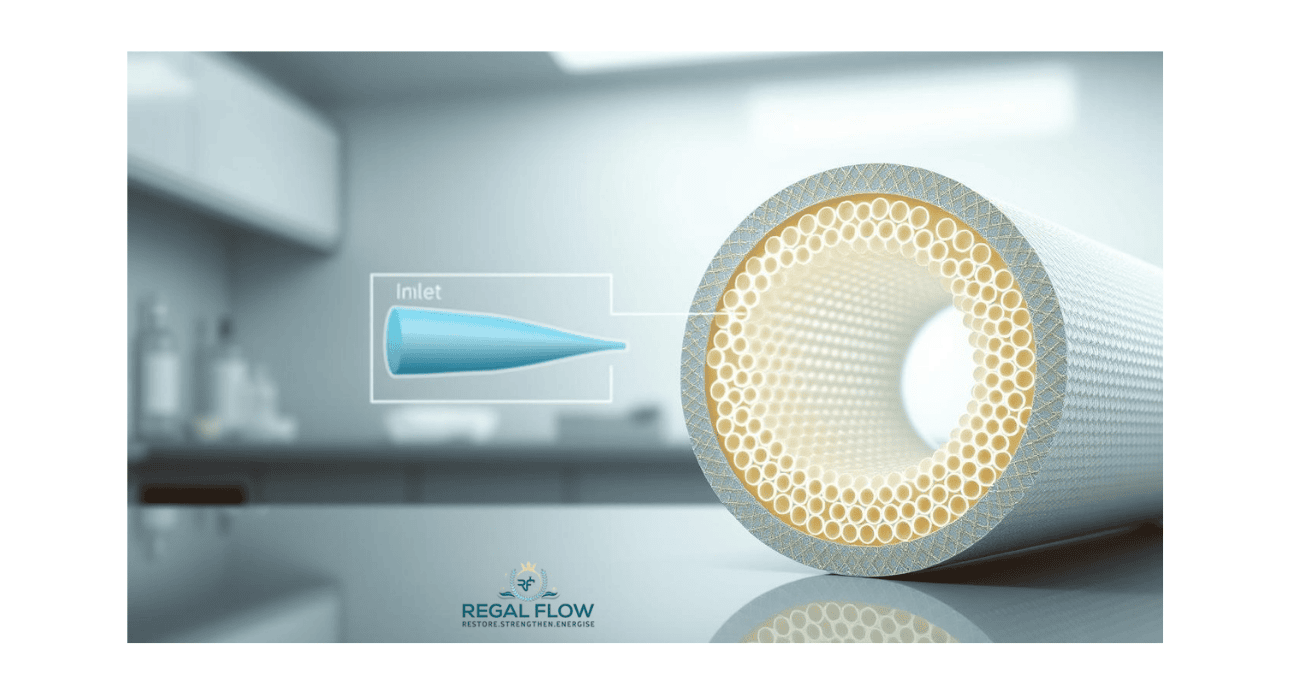
Understanding Filter Pore Size: What It Means for Your Countertop Water
Ever wondered why some water filters work better than others? It’s all about pore size! Smaller pores trap finer particles but might slow water flow. Filtration Performance depends on choosing the right size for your needs. Keep reading to learn how to pick the perfect filter for your countertop!
Basics of Filter Pore Size (Filter Pore Size Basics)
Choosing the right water filter for your countertop dispenser can feel a bit daunting. One of the key factors to consider is the filter's pore size. This small but crucial detail affects how well the filter can remove contaminants from your drinking water. It’s a bit like picking a good coffee grinder—too fine, and it clogs; too coarse, and it misses bits. Get it right, and your water will be as pure as it tastes.
What is Pore Size? (Pore Size Definition)
Pore size refers to the tiny openings in a filter that trap particles as water flows through. Imagine using a sieve to strain pasta—the smaller the holes, the finer the particles that get trapped. In filters, these pores are measured in microns. A micron is one-millionth of a metre. To put it in perspective, a human hair is about 70 microns wide. A filter with a 1-micron pore size can trap particles much smaller than that, making it suitable for catching bacteria and fine sediment.
Micron Ratings Explained (Micron Rating Explained)
Micron ratings indicate the smallest particle size a filter can capture. Here’s a quick breakdown:
| Micron Rating | Captures | Examples |
|---|---|---|
| 5+ microns | Larger particles like sand and rust | Sand, debris |
| 1 micron | Bacteria, lead particles | E. coli, fine dust |
| 0.2 microns | Cysts, some viruses | Giardia, tiny microbes |
Absolute vs. Nominal Ratings (Absolute vs Nominal Filter)
Filters can have either absolute or nominal ratings. An absolute rating means the filter blocks 99.9% of particles at the specified micron size. A nominal rating means it blocks around 80% of those particles. Think of it like a nightclub bouncer—an absolute filter is stricter, letting hardly anyone past. A nominal filter is a bit more relaxed, allowing a few slip-ups. Absolute filters are more precise but may reduce water flow. Nominal filters are more affordable and suitable for general use.
How Pore Size Impacts Filtration (Pore Size Filtration Impact)
The pore size you choose has a direct impact on how effectively your filter works.
Particle Removal Efficiency (Particle Removal Efficiency)
Smaller pores catch more contaminants, but they can also reduce the water flow rate. For instance, a 0.2-micron filter can trap bacteria, but it may require more frequent maintenance. In contrast, a 5-micron filter might let smaller particles through but allows a faster flow. It’s a bit of a trade-off—like wearing a thick jumper on a chilly day. Warmth is guaranteed, but movement might be a bit restricted.
Flow Rate and Pressure (Filter Flow Rate)
Filters with smaller pores can cause a drop in water pressure. This is especially noticeable in high-demand households. To maintain a good flow, choose a filter that balances pore size with your household’s water usage.
Importance of Pore Size in Countertop Water Filters (Pore Size in Water Filters)
Pore size isn’t just about filtration—it also affects how you use your water dispenser daily.
Targeting Specific Contaminants (Targeting Water Contaminants)
Different contaminants require different pore sizes. For example, bacteria need a 0.2-micron filter, while rust can be blocked by a 5-micron filter. Matching the pore size to the problem ensures clean, safe water.
Bacteria and Cyst Removal (Bacteria Removal)
To remove bacteria and cysts, look for filters rated at 0.2 microns. These can effectively block pathogens like E. coli and Giardia, common in some water supplies.
Sediment and Turbidity Reduction (Sediment Reduction)
Sediment filters usually range from 5 to 50 microns, catching sand, silt, and rust. Reducing turbidity improves water clarity and taste.
Improving Water Clarity (Water Clarity Improvement)
Smaller pores help remove tiny particles that make water appear cloudy, resulting in clearer, more appealing drinking water.
Choosing the Right Pore Size for Your Needs (Choosing Filter Pore Size)
Choosing the right pore size starts with understanding your water source.
Understanding Your Water Source (Understanding Water Source)
Get your water tested to identify the main contaminants. Hard water areas might need larger pores for minerals, while rural areas may require finer filtration to catch bacteria.
Water Testing (Water Testing)
Use home testing kits or get a professional analysis to identify the specific contaminants in your tap water.
Matching Pore Size to Contaminants (Matching Filter Pore Size)
Look for filters designed to tackle your specific issues, whether it’s sediment, bacteria, or chemicals.
Specific Contaminant Removal (Contaminant Removal)
If your water has high lead levels, choose a filter rated at 1 micron or smaller. For chlorine, carbon block filters with small pores work well.
Conclusion: Making Smart Filter Choices
Understanding filter pore size is key to keeping your water clean and safe. Smaller pores mean better filtration but can slow water flow. The right choice depends on your water quality and how you use your dispenser. Always check product specifications and look for certified filters to ensure reliable performance. With the right pore size, you can enjoy fresh, safe drinking water without compromising on convenience.
More Countertop Water Dispenser info we think you'll love
Well Water Woes? Find the Perfect Countertop Dispenser for Clean, Safe Water
Best Countertop Water Dispensers for Hard Water: Top Picks & Tips
How Reverse Osmosis Works in Countertop Water Dispensers
Activated Carbon Filtration: What It Removes and How It Works
UV Purification: How Light Disinfects Your Countertop Water
Sediment Filtration: Protecting Your Countertop Water Dispenser


Leave a comment